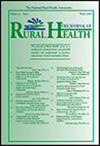Health care, social support, and pregnancy-related anxiety in urban and rural and remote Australian women
Abstract
Introduction
Anxiety is the most prevalent mental health condition in the perinatal period and may be experienced more by rural and remote pregnant women, who, compared with urban counterparts, have fewer available and less access to maternity health care services. Research has yet to examine the relationship between pregnancy-related anxiety and access to and availability of health care services and social support for pregnant women, how relationships are affected by telehealth usefulness, satisfaction, and online social support, and whether relationships are different for rural and remote women compared with those in urban areas.
Method
We used a quantitative cross-sectional design and online survey to collect data from 174 pregnant women living in urban and rural and remote regions of Australia. Data were collected from January to May 2023.
Results
Compared with urban pregnant women, rural and remote pregnant women reported greater pregnancy-related anxiety, lower accessibility and availability of health services, and lower levels of social and online social support. Controlling for all variables, lower reported social support (b = −0.34, 95% BCaCI [−0.56, −0.14]) and online social support (b = −0.17, 95% BCaCI [−0.30, −0.04]) were significantly associated with higher pregnancy-related anxiety for rural and remote pregnant women, but only no previously reported pregnancies was associated with higher pregnancy-related anxiety for urban women (b = −5.04, 95% BCaCI [−7.88, −2.02]).
Conclusion
Future research could further investigate individual, social–cultural, and location-specific factors to determine the specific needs of women during pregnancy with the view to shaping targeted pregnancy-related interventions.

 求助内容:
求助内容: 应助结果提醒方式:
应助结果提醒方式:


